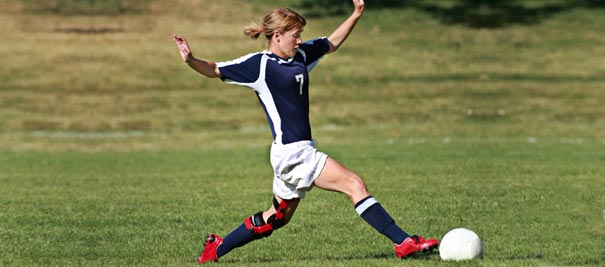
Several factors cause athletes of all levels to continue to play through the pain: the warrior mentality, shame from showing weakness and letting others down, pressure from teammates and coaches, and the threat, imagined or real, of loss of playing time.
Because of these factors, a significant percentage of players keep their injuries hidden. According to a 2012 FIFA report, 39 percent of the soccer players in the 2010 World Cup resorted to painkillers before the game. As well, a survey found that NCAA Division I athletes were injured at least once, while half felt pressured to play while injured. For Little Leaguers, statistics show that one child is admitted to the emergency room every 25 seconds, while 42 percent of child athletes have concealed injuries to stay in the game.
Yet, although high-profile professional athletes have noticeably played with broken bones, torn ACLs, or strained hamstrings, “sucking it up” has greater ramifications beyond losing. Athletes end careers as a result, or find that a minor condition worsens, leaving them out longer. An untreated injury can have the following consequences:
Physical
Several scenarios have the potential to occur when an athlete continues to play through an injury:
A Minor Injury Worsens: For instance, an athlete that develops a small fracture finds that this injury turns into a more serious condition, such as a greater fracture that takes longer to heal. Or, in the case of concussions, an athlete that returns to playing too soon may be prone to second impact syndrome, which may lead to a far more damaging brain injury.
The Athlete Begins to Use Other Muscles: Rather than recover the injured area, the player compensates by using a different group of muscles. In these situations, not only does the initial injury remain untreated, but the athlete may further harm another area of his or her body. This second condition, however, doesn’t appear suddenly, and if ignored, it progresses from acute to chronic. For a player’s career, subtle symptoms signal these overuse injuries, which exacerbate over time and can lead to greater disability.
The Athlete’s Tolerance to Pain Lessens: Whether from playing through an injury or taking painkillers, athletes that continue to get back in the game over time end up having a higher tolerance to pain. In fact, German researchers, in reviewing 15 studies on this topic involving 550 athletes and 330 people with normal activity levels, found that athletes become unable to distinguish between everyday soreness and a far more serious condition.
Taking Too Long to Receive Treatment: As a result, the condition worsens significantly. Recovery, be it with surgery or simply resting, takes a greater period of time, keeping the athlete out of the game.
More Concerns
When an athlete struggles to remain in the game in spite of an injury, they are at a greater risk for developing dependence on NSAIDs and OTC pain medications.
Along with these factors, pushing through the pain correlates with overtraining symptoms (OTS). Although there’s no exact diagnostic criteria, OTS is characterized by decreased physical performance, lack of motivation, and changes in sleep patterns. However, OTS can be treated by reducing the athlete’s activity.
Recovery
As an athlete, have you been experiencing pain, swelling, or weakness while going through your activities of daily living (ADLs)? If you have any of these three symptoms, and if you’ve been taking an OTC pain medication for more than five days, it’s recommended an athlete visit a sports medicine specialist, who then prescribes workouts and exercises targeted to the athlete’s specific physical needs with the goals of healing and ultimately growing stronger.
However, it’s not just the pros that may experience this. Enthusiasts and weekend warriors should keep their condition in mind, and consult a professional if the above occurs.
No matter your playing level, there’s one significant facet all should keep in mind: Early assessment of injury leads to faster recovery and a full return to activity.
Specializing in sports medicine, physical therapy, and certified athletic training, Integrated Rehabilitation offers complimentary injury assessments. If you’ve been suffering through a sports-related injury, start reversing the damage by contacting any of our Connecticut locations.

